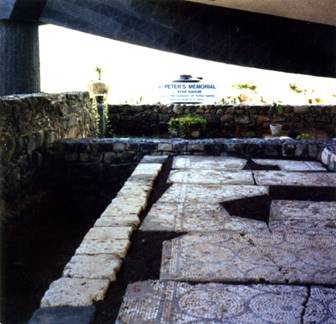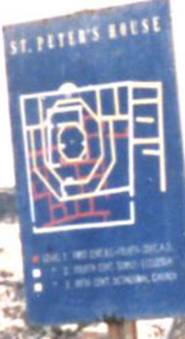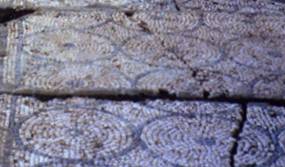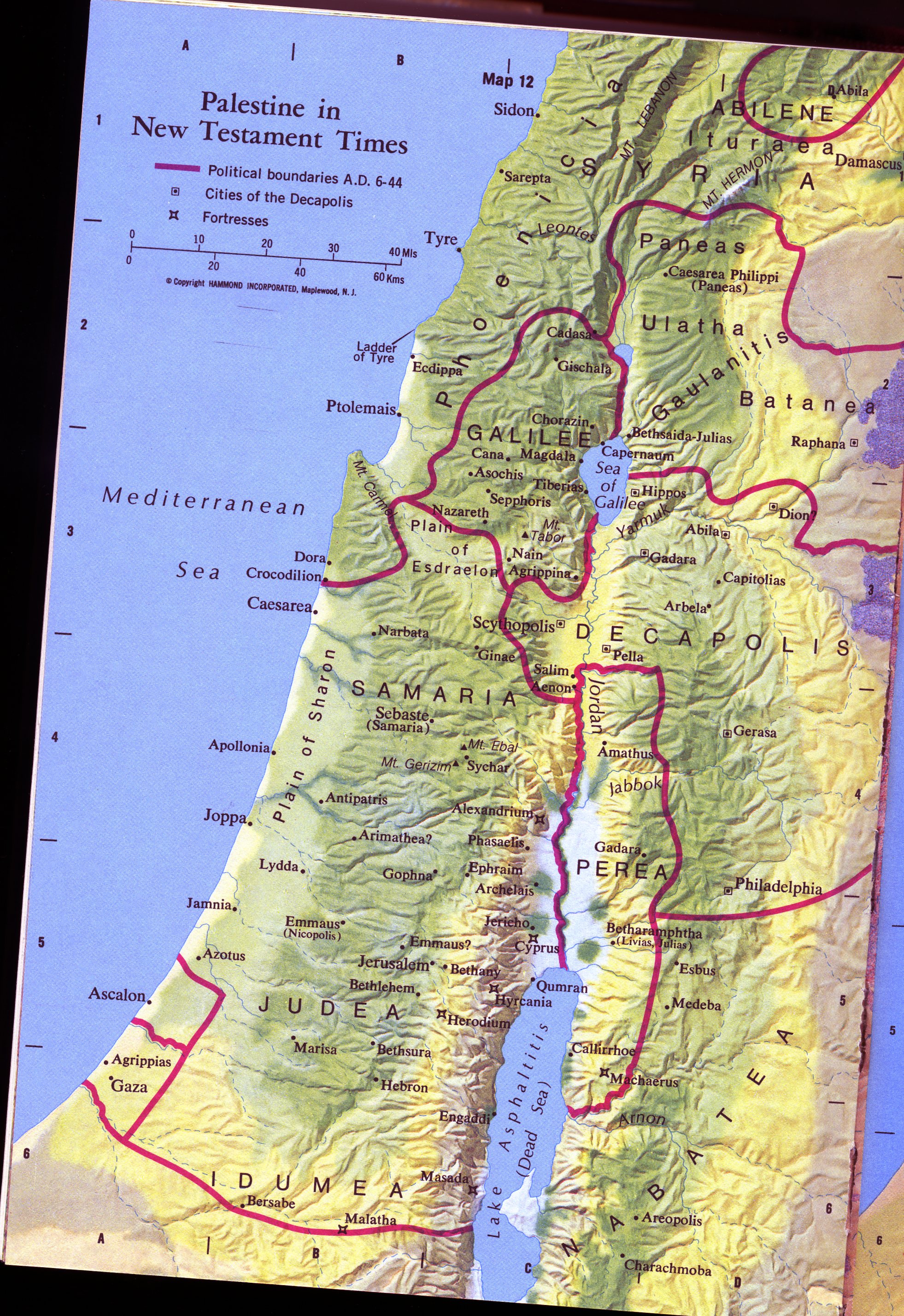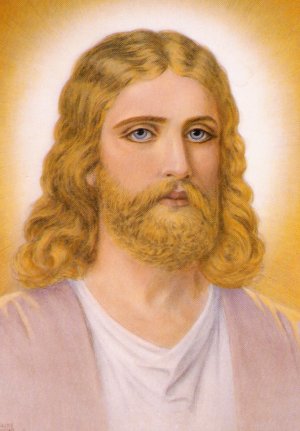MARY MAGDALENE, THE MYSTERIOUS ONE
MARY MAGDALENE, THE MYSTERIOUS ONE
Nancy B. Detweiler, M.Ed., M.Div.
For most of the past 2,000 years of the Piscean Age, the true identity of Mary Magdalene has remained shrouded in secrecy. Why? What earth-shaking cataclysm is thereby postponed? Why is Mary Magdalene the only biblical character to be controversial? Why, in 591 C.E. (A.D.), did Pope Gregory I in his Homily 33 declare that Mary Magdalene and the woman caught in adultery (Luke 7) were one and the same; and that the faithful should regard Mary Magdalene as a penitent whore? In 1969, the Vatican officially repealed Pope Gregory I’s designation of Mary Magdalene as a whore and declared her a saint instead. However, the majority of the public continues to think of her as the prostitute.[1]
For many, Mary Magdalene’s identity has been confused by the presence of at least seven women called “Mary” in the gospel stories. At least one major Hollywood movie presented Mary Magdalene as Mary, the sister of Lazarus. Can we solve the mystery—who is Mary Magdalene?
Harper’s Bible Dictionary lists the seven Marys.
1. Mary, the mother of Jesus – Roman Catholics venerate this Mary as the Virgin Mother of the God Child, Jesus. Yet, aside from the virgin birth stories in synoptic gospels of Matthew and Luke, Mary—the mother of Jesus—is portrayed as not truly understanding her son’s mission.
At age twelve, Jesus is perplexed when his parents, believing him to be lost, do not immediately look for him in the Temple. “Why were you looking for me? Did you not know that I would be in the house of my Father? But they could not understand the words which he said to them.” Luke 2:49-50
Mark, the earliest of the synoptic gospels, does not mention the birth of Jesus. The Gospel of Mark depicts Jesus’ family reacting to his healing of those afflicted with unclean spirits by thinking he has gone insane: “And his relatives heard of it, and went out to seize him, for they said, ‘He has lost his mind.’” Mark 3:21
A few verses later, the Gospel of Mark leaves the impression that Jesus makes no response to the request of his mother and brothers to see him. “The people were sitting around him; and they said to him, ‘Behold, your mother and your brothers are outside, asking for you.’ And he answered, saying to them, ‘Who are my mother and my brothers?’ And he looked at those who sat near him and said, ‘Behold my mother and behold my brothers. For whoever does the will of God is my brother and my sister and my mother.’” Mark 3:32-35
The Gospel of John differs in many ways from the synoptic gospels. Although Jesus’ birth is not mentioned in the Gospel of John, Mary appears to be familiar with the spiritual power residing within Jesus—as depicted in the story of the wedding in Cana. But is this Mary, the mother of Jesus – or – is it Mary Magdalene? Has the text been manipulated so that it appears to be the wedding of an unnamed couple in Cana to which Jesus had been invited? Let’s look at the narrative in John 2:1-11.
When the wine is depleted, Mary commands the servants to obey Jesus’ instructions. As a result, jars of water are transformed into wine. Upon Jesus’ request, the servants take the newly created wine to the chief guest (or master of ceremonies) for his approval. The chief guest calls the bridegroom to him and says, “Every man at first brings the best wine; and when they have drunk, then that which is weak; but you have kept the best until now.” John 2:8-10
Four significant impressions stand out in John’s account of this wedding:
1) Mary takes charge when the wine runs out, even though as an invited guest she would be acting inappropriately.
2) No mention is made of the bride.
3) The chief guest calls the bridegroom to commend him on the wine. Was this Jesus?
4) Mary and Jesus were responsible for the wine … why?
Jewish custom was that the wedding feast took place in the home of the groom’s father. Here is where the wine flowed freely and the celebration lasted for a week.[2] By the time Jesus began his ministry, his earthly father had died. According to the Talmud, Joseph of Arimathea was the younger brother of the father of Mary, mother of Jesus. As Mary’s uncle, Joseph of Arimathea became their legal guardian.[3]
Joseph of Arimathea was one of the wealthiest men in the world, with vast holdings in the tin mines of Britain and one of the largest private merchant shipping fleets afloat.[4] Since the village of Cana is located between Magdala—a thriving community for shipbuilding and pickled fish that were shipped throughout the Roman Empire—and Phoenicia, also known for its shipbuilding industry, could Joseph of Arimathea have owned a residence in Cana? History and traditional legends report Jesus spending much time in the company of his uncle during the “lost years” of the New Testament record.[5] Could the wedding feast have taken place in Joseph’s residence in Cana? Connecting all the dots certainly makes it a possibility—a possibility that could even explain why Mary and Jesus took charge when the wine gave out.
2. Mary of Bethany, the sister of Martha and Lazarus – Mary Magdalene is frequently confused with Mary of Bethany. This confusion is based partially on the three differing stories of a woman anointing Jesus.
In the Gospel of John, Mary of Bethany is depicted as the “Mary” who anoints Jesus’ feet with expensive perfume and wipes them with her hair. “Mary took a cruse containing pure and expensive nard, and anointed the feet of Jesus, and wiped his feet with her hair; and the house was filled with the fragrance of the perfume.” Mary of Bethany anointing her Master’s feet is a sign of Middle Eastern hospitality and of her obeisance to him as one of his disciples. (John 11:1-2 from Lamsa’s ancient Aramaic text) The fact that she used very expensive pure nard reveals Jesus’ friends in Bethany were also wealthy.
In the Gospel of Luke, Jesus is eating at the home of a Pharisee. An anonymous female sinner appears and symbolically bows down to Jesus as she wets his feet with her tears of repentance, wipes them with her hair, then kisses and anoints them with perfume. Afterwards Jesus compares the woman’s deed with the lack of ancient Middle Eastern hospitality he received upon entering the Pharisee’s home: “when I entered your house, you did not give me even water for my feet. You did not kiss me; but she, since she entered, has not ceased to kiss my feet. You did not anoint my head with oil; but she has anointed my feet with perfume.” He then forgives the woman’s sins and affirms, “Your faith has saved you; go in peace.” (Luke 7:37-50 – Lamsa’s ancient Aramaic text) This is the woman to whom Pope Gregory I refers in his homily 33 of 591 C.E. (A.D.)
Both versions proclaim obeisance by the holding of Jesus’ feet and reflect John the Baptist’s statement: “He who is coming after me is greater than I, one whose shoes I am not worthy to remove.” (Matthew 3:11)
As we shall see later, the Gospel of Mark’s version is striking in its differences. According to some biblical scholars, there is no reason to think the anointing event was limited to only one occasion. Due to the hot, dry climate, it was Middle Eastern custom to anoint oneself/guests with aromatic oils. It is possible the gospels reflect written or oral accounts of more than one anointing. Both Luke’s and John’s versions appear to occur early in Jesus’ ministry. Mark’s version takes place at the end of Jesus’ ministry.
Another reason Mary Magdalene is confused with Mary of Bethany is that Jesus considered the three siblings—Martha, Mary, & Lazarus—close friends whom he visited frequently. However, Mary of Bethany’s personality is the opposite of Mary Magdalene’s. Mary of Bethany is most often mentioned as being in the company of Martha and Lazarus in or near her home in Bethany. She is the passive, mystical member of the family who appears to lack practicality. Martha is definitely the head of the household. Mary of Bethany views Jesus as her teacher; she sits at his feet while he speaks in her home—oblivious to the food preparations occupying Martha’s attention. Mary of Bethany was not active within the ministry of Jesus. He saw her only when he visited Bethany, a Judean village on the eastern slope of the Mount of Olives about two miles east of Jerusalem and approximately two weeks journey by foot from Nazareth—Jesus’ hometown and Capernaum—where Jesus’ ministry was based in Galilee.
The map at the bottom of blog reveals the distance from Magdala, near Capernaum on the west side of the Sea of Galilee in Galilee, and Bethany, located just outside Jerusalem near the Dead Sea in Judea. Samaria is located between Galilee and Judea—most Jews would not enter Samaria during the time of Jesus. Almost the entirety of Palestine separated the hometowns of Mary of Bethany and Mary of Magdala. To confuse their identities defies logic.
The lesser known “Marys” were:
3. Mary, the mother of James, Joseph, and Salome – or – the “other Mary” as she is called in the crucifixion and burial scenes.
4. Mary, the wife of Clopas and sister-in-law to Mary, mother of Jesus. Some accounts list her as the sister of Mary, mother of Jesus. This Mary was also present at the cross. She is often confused with Mary, the mother of James, Joseph, and Salome. In Matthew 10:3, “James,” the lesser disciple, is listed as the son of Alphaeus (also called Clopas and Cleopas) and thus, the son of this Mary and cousin to Jesus.
5. Mary of Jerusalem in whose spacious home Jesus and his disciples celebrated their last Passover together and where 120 (not counting women) of Jesus’ followers met after his death. (Acts 1:13-15) Mary of Jerusalem’s son, John Mark, accompanied Barnabas and Paul on some of their missionary journeys.
6. Mary of Rome, who is mentioned by the Apostle Paul in Romans 16:6: “Greet Mary, who has labored hard among you.”
And, last but far from least:
7. Mary Magdalene or Mary of Magdala, whose name appears first in every listing of Jesus’ female disciples. (Mark 15:40-41, 47; Mark 16:1; Matthew 27:55-56, 61; Matthew 28:1; Luke 8:2-3; and Luke 24:10) Biblical scholars therefore believe Mary Magdalene to have been the leader of a group of women who traveled with and served Jesus throughout his three years ministry.
Mary Magdalene was ever-present with Jesus in all four gospel narratives. The majority of Jesus’ ministry took place in Galilee, along the western shores of the Sea of Galilee. “He did not wish to travel in Judea because the Jews wanted to kill him.” (John 7:1) His ministry was centered in Capernaum, where he taught in the synagogue and frequently stayed in the home of Peter. Archaeological remains of both the synagogue and Peter’s house are visible today. The still vividly painted ceramic tile floors of Peter’s home are confirmation of his wife’s wealth.
Ceramic tile floor in Peter’s house in Capernaum – a long brick, waist-high fireplace is located to the right. This room is thought to be the cooking area. Note the size of the home. Ceramic tile floors are found only in the ruins of wealthy homes.
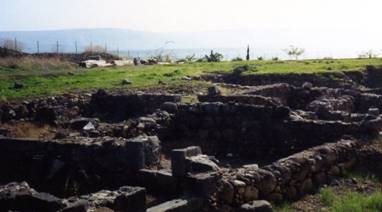 Ruins of Capernaum with Sea of Galilee in background
Ruins of Capernaum with Sea of Galilee in background
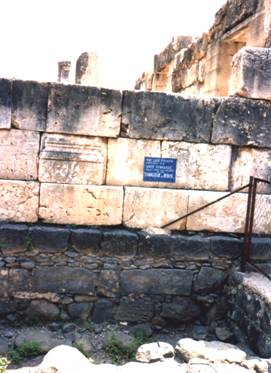 Synagogue at Capernaum – the black stones belong to the synagogue know by Jesus, the white stones are the synagogue built over the one in which Jesus taught.
Synagogue at Capernaum – the black stones belong to the synagogue know by Jesus, the white stones are the synagogue built over the one in which Jesus taught.
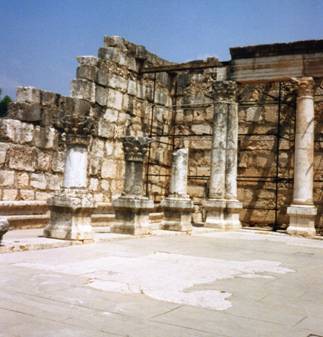 Synagogue at Capernaum – built over the one Jesus knew.
Synagogue at Capernaum – built over the one Jesus knew.
Photos by Nancy B. Detweiler – 1993
Ancient traditional legends state Peter’s wife’s name as Petronilla, a beautiful, well-bred, wealthy woman who assisted Peter throughout his ministry. She and Peter were martyred together in Rome.
Jesus and his disciples have been portrayed as poor. This could not be farther from the truth. The fishing business was an international industry; Jesus’ uncle—Joseph of Arimathea—was acknowledged as one of the wealthiest men in the world; a group of wealthy women traveled with Jesus; anytime Jesus needed a large house in which to meet, it was available to him. Jesus descended from King David; he was of royal lineage. Matthew 1: 16 provides the genealogy for Jesus, tracing him through the line of Joseph to King David. “Jacob begot Joseph the husband of Mary, of whom was born Jesus.” The people of Palestine recognized Jesus’ royal lineage. One example: “Have mercy on us, O son of David,” called two blind men as Jesus passed by. (Matthew 9:27)
The main route of an international highway known as the Via Maris was located along the western coast of the Sea of Galilee. Capernaum and Magdala—located on this route—prospered by the international fish trade. The Sea of Galilee contained some forty species of fish that were salted in Magdala and shipped throughout the Roman Empire.[6]
According to the Jewish Virtual Library, Via Maris was one of the most important trade routes in the Middle East during ancient times. Via Maris is Latin for “Way of the Sea” referred to in Isaiah 9:1. The map above reveals the three major trade routes in ancient Palestine: Via Maris, Ridge Route, and the King’s Highway. The Via Maris “connected the major routes from the Fertile Crescent to Mesopotamia (from Egypt to modern day Iran, Iraq, Turkey, and Syria.”[7] Ancient Palestine was cosmopolitan; its territory was alive with international trade and exposure to numerous cultures. Biblical characters spoke several languages, including Hebrew, Greek, and Aramaic. Studying the geography of ancient Palestine requires that we re-think our concept of who the biblical characters were. Those characters that we study by name were not poor, naïve, and uneducated. Instead, they were wealthy, educated, and well-traveled.
Ancient Magdala (Tarichaeae = the Greek name; Magdala = the Hebrew—they were one and the same) was a thriving rural community on the western shore of the Sea of Galilee between Capernaum and Tiberias. Magdala contained a small synagogue and we can assume Jesus taught in this synagogue as well as the one in Capernaum. In fact, Mark 1:39 confirms, “He preached in all their synagogues throughout Galilee.”
According to traditional legends, Mary Magdalene met Jesus in the home of Peter. At the time they met, Mary Magdalene is described as being young, beautiful, arrogant, gorgeously attired, worldly, and very wealthy. When she stepped into his presence, she was so impressed that she immediately renounced her former life in order to follow Jesus.[8]
This transformation from a life focused on the emotional and materialistic planes to a life completely dedicated to serving the Christ denotes the healing mentioned in Luke 8:2: “Mary who is called Magdala, from whom seven demons went out ….” Charles Fillmore, founder of the Unity Movement, interprets demons to be error thoughts and feelings.[9] Mary Magdalene was not possessed. She lists the seven powers of wrath or demons in her The Gospel of Mary. They are: “darkness, desire, ignorance, excitement (likely meaning fear) of death, kingdom of the flesh, foolish wisdom of the flesh, and wrathful wisdom.” Another translation of The Gospel of Mary lists these demons or manifestations as: darkness, craving, ignorance, lethal jealousy, enslavement to the body, intoxicated wisdom, and guileful wisdom.
These demons are the same demons each of us must overcome in order to achieve a higher, 5th dimensional consciousness—no negativity or non-truth can more forward into the higher dimensions. The description of young Mary Magdalene by the traditional legends could describe any number of super stars in our 21st century American culture—super stars whom many attempt to emulate. In modern language, Mary Magdalene was a super star who was transformed into a servant of the Christ and thereafter used her wealth to support Jesus’ ministry.
Biblical scholars have found no evidence to prove that Mary Magdalene was a prostitute, or the woman caught in adultery, whom (as the story is told) Jesus prevented from being stoned to death. This connection was made many years later, possibly by those who wanted to hide her true identity. In fact, according to a footnote in Lamsa’s translation of the Bible from the Aramaic of the Peshitta, this story is not found in the ancient Peshitta, but occurs in later Aramaic texts. This footnote explains: “With reference to originality of the Peshitta text, the Church of the East received the scripture from the hands of the blessed Apostles themselves in the Aramaic original … the Peshitta is the text of the Church of the East which has come down from the biblical times without any change or revision.”[10]
As related in John 8:1-11, the woman caught in adultery was brought to Jesus while he taught in the Temple of Jerusalem. By this time, Mary Magdalene was an established and integral part of Jesus’ ministry. Even if this were not the case, Mary Magdalene lived in Magdala, a town located approximately two weeks foot-journey from Jerusalem. Even though her family was wealthy, the possibility of a young Jewish woman from Magdala being free to roam alone in the metropolitan city of Jerusalem appears remote. Ancient tradition places her first meeting with Jesus as being in Peter’s home in Capernaum, not in the Temple of Jerusalem. It seems far more likely that Mary Magdalene’s family were friends with Peter and Petronilla’s family. Both were wealthy and would have associated in the same economic/social circles. The outskirts of the villages located around the Sea of Galilee were very close to each other, enabling easily accessible interaction between their residents.
From her life of materialism, Mary Magdalene became the most spiritually advanced of Jesus’ disciples—an Initiate into the hidden wisdom to which Jesus so often referred. She pre-empts Peter and John when she receives revelations from the risen Christ that she is to share with the disciples gathered at the home of Mary of Jerusalem. The Gospel of Mary reiterates this favored position.
“At Peter’s request, she (Mary Magdalene) tells the disciples about things that were hidden from them. The basis for her knowledge is a vision of the Lord and a private dialogue with him…. After Mary finishes recounting her vision to the disciples, Andrew and then Peter challenge her on two grounds. First of all, Andrew says, ‘these teachings are strange.’ Secondly, Peter questions, would the Savior really have told these teachings to a woman and kept them from the male disciples. Levi admonishes Peter for contending with the woman as against the adversaries and acknowledges that the Savior loved her more than the other disciples…. The confrontation of Mary with Peter is also found in The Gospel of Thomas, Pistis Sophia, and The Gospel of the Egyptians.[11] The Gospel of Mary portrays Mary Magdalene as the Savior’s beloved, possessed of knowledge and teaching superior to that of the public apostolic tradition. Her superiority is based on vision and private revelation and is demonstrated in her capacity to strengthen the wavering disciples, and turn them toward the Good.”[12]
Throughout the four gospel narratives, we see Mary Magdalene and a group of wealthy women traveling with Jesus. They financially supported his ministry, as well as served alongside of him and the other disciples. Joanna, the wife of Herod Antipas’ steward, Chuza, and Susanna are also listed as belonging to this wealthy group of women. (Luke 8:3) Some of the women traveling with Jesus were either the wives or family members of Jesus’ disciples—Peter’s wife Petronilla; Philip’s wife and daughter; Mary, wife of Clopas and mother of the lesser James. For the duration of his ministry, Jesus was surrounded by his wealthy female disciples. His attitude and treatment of them had no resemblance to the traditional attitudes toward women that were prevalent in the Middle Eastern culture during biblical times. They were his equals and he recognized them as such.
How and why has Mary Magdalene been confused with Mary of Bethany? From the biblical account alone, we see Mary Magdalene stood out as a respected leader of Jesus’ female disciples, many of whom were likewise wealthy and would have been accustomed to demanding the respect afforded an individual of high status in Galilee. Yet, they willingly accepted Mary Magdalene’s leadership. Mary Magdalene possessed the “eyes to see and the ears to hear”—a phrase Jesus used to denote those who could understand the hidden meaning of his teachings—the spiritually awakened. Mary Magdalene understood the mission of Jesus.
In contrast, Mary of Bethany led a sheltered life in the home of her siblings, Martha and Lazarus. Mary Magdalene is assertive with a strong sense of individual identity evidenced in her leadership role; Mary of Bethany, though loving the teachings of Jesus, is passive and submits to the leadership of her sister, Martha. She sits at Jesus feet to listen to his teachings, while Mary Magdalene walked beside him throughout his ministry. To confuse the two women defies reason. The answer as to why confuse them is a matter of far greater import.
The discovery in 1945 of the Nag Hammadi Library consisting of 4th century manuscripts can shed light on this confusion. The Gospel of Philip identifies Mary Magdalene as “the one who was called his companion,” meaning Jesus’ companion. “And the companion of the … Mary Magdalene. Loved her more than [all] the disciples and [used to] kiss her [often] on her […] The rest of [the disciples]. They said to him, ‘Why do you love her more than all of us?’ The savior answered and said to them, ‘Why do I not love you like her? When a blind man and one who sees are both together in darkness, they are no different from one another. When the light comes, then he who sees will see the light, and he who is blind will remain in darkness.’” [13] According to ancient traditions, Jesus and Mary Magdalene had three children: a daughter named Sara and two sons.
In The Gospel of Mary, Levi tells Peter, Andrew, and the other disciples: “Surely the Savior knows her very well. That is why he loved her more than us.” At least until the 4th century, the early Christians had no reason for concern over Jesus and Mary Magdalene being married. Quoting from Harper’s Encyclopedia of Bible Life: “Marriage was an agreement between two heads of families, not between two individuals who were ‘in love.’ … For a man, marriage was the only conceivable state; bachelorhood is never mentioned as a viable alternative.” [14]
Since Joseph of Arimathea was legal guardian for Jesus, he would have been the one to meet with the father of a perspective wife. The very likely connection between Joseph of Arimathea and the wealthy families living in a major shipbuilding community like Magdala enhances the likelihood of marriage between Mary Magdalene and Jesus. Marriage was for the purpose of having children and continuing the family lineage and DNA.
The relationship between Mary Magdalene and Jesus is that of Twin Flames—two parts of the same Soul. The symbolic story of Twin Flames is found in Genesis 2. “And Adam gave names to all cattle, and to all fowls of the air, and to all wild beasts; but for Adam there was not found a helper who was equal to him. So the Lord God caused a deep sleep to fall upon Adam, and he slept; and he took one of his ribs, and closed up the place with flesh in its stead. And of the rib which the Lord God had taken from Adam he made a woman, and brought her to Adam. And Adam said, ‘This is now bone of my bones, and flesh of my flesh; she shall be called Woman, because she was taken out of Man. Therefore shall a man leave his father and his mother, and shall cleave unto his wife, and they shall be one flesh. And they were both naked, Adam and his wife, and were not ashamed.”[15] To be naked is symbolic of being pure, open.
According to the Ascended Masters’ teachings, twin flames are two parts of the same Soul. Although twin flames may experience a few lifetimes together, they tend to go their separate ways until they are ready to be reunited, to leave the wheel of karma, and to prepare for ascension into higher dimensional living. In order to prepare for ascension, twin flames must accomplish a mission together. This does not mean the twin flames will be on the same dimension while engaged in the mission; however, they will most likely be consciously aware of working together. Twin Flames are never truly separated because as one grows—or fails to grow—he/she impacts the other. Even though Twin Flames are in vastly different sections of the cosmos, the soul link is ever-present and they will eventually be ready to reunite on the same plane.
When she first met him at Peter’s home in Capernaum, Mary Magdalene instantly recognized Jesus as her twin flame and transformed her lifestyle in order to complete their mission together. She accompanied and assisted Jesus throughout his ministry, then continued, as the Apostle of Apostles, to teach the disciples the hidden wisdom Jesus had taught her privately.[16]
This Twin Flame relationship is evident in Mark’s story of the woman anointing Jesus’ head. In Mark 14:1-9, we find “There came a woman who had with her an alabaster vessel of perfume of pure nard, of good quality and very expensive; and she opened it and poured it upon the head of Jesus.. Jesus said, ‘Let her alone; why do you trouble her? She has done a good deed for me.. But this one has done it with what she had; she anointed my body in advance as for the burial. And truly I say to you, wherever this my gospel is preached throughout the world, what she has done will also be told as a memorial to her.'”
Although Mark’s gospel does not identify this woman, we can derive several clues from the narrative:
1. The woman is wealthy. She uses very expensive pure nard (spikenard), a perfume imported from the Himalayas in alabaster boxes and opened on special occasions. In biblical times, this nard cost approximately one year’s wages. (Harper’s Bible Dictionary).
2. Anointing on the head, during biblical times, was a means of investing someone with power, such as the anointing of Solomon as king by the priest Zadok and the prophet Nathan. (I Kings 1:39) Anointing could also signify the consecration of someone or something for a holy purpose. Anointing on the head in the presence of a gathering was performed by priests and prophets—persons held in high esteem and possessing spiritual authority.[17]
3. Jesus recognized the woman’s anointing as highly significant. In his words: “Wherever this my gospel is preached throughout the world, what she has done will also be told as a memorial to her.”
4. The story of the woman anointing his head is to be told as a memorial to her, not to Jesus. Jesus knew her actions to be on par with his gospel. This eternal union instituted by Jesus signifies a pairing of male and female.
Mary Magdalene and Jesus were Twin Flames performing their mission together. Even though the time of being physically together was drawing to a close, this joint mission continued as Mary Magdalene became the Apostle of Apostles.
Palestine in Jesus’ time – Taken from: Harper’s Bible Dictionary
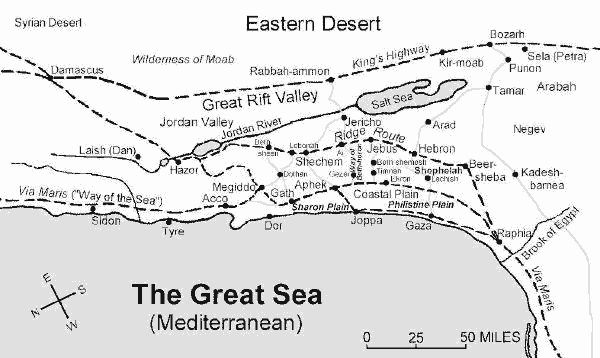 Map of major trade routes running through Palestine – Taken from the Jewish Virtual Library Website.
Map of major trade routes running through Palestine – Taken from the Jewish Virtual Library Website.
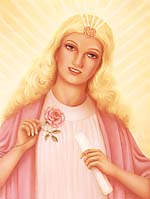 Ascended Lady Master Nada – St. Mary Magdalene
Ascended Lady Master Nada – St. Mary Magdalene
[1] Preface to The Gospel of Mary, David Tresemer, Ph.D. & Laura-Lea Cannon. The two extant copies of this gospel are a part of The Nag Hammadi Library.
[2] Harper’s Encyclopedia of Bible Life, Madeline S. & J. Lane Miller.
[3] The Drama of the Lost Disciples, George F. Jowett.
[4] Jowett.
[5] Jowett.
[6] Harper’s Bible Dictionary, Paul J. Achtemeier, General Editor.
[7] http://www.jewishvirtuallibrary.org/jsource/History/ViaMaris.html
[8] New Age Bible Interpretation, Corrine Heline.
[9] Metaphysical Bible Dictionary, Charles Fillmore.
[10] Preface to Holy Bible: From the Ancient Eastern Text, George M. Lamsa, Translator – from the Aramaic of the
Peshitta.
[11] The Gospel of Mary Introduction, Karen L. King.
[12] King.
[13] The Gospel of Philip, Nag Hammadi Library.
[14] Harper’s Encyclopedia of Bible Life, pages 98-100.
[15] Genesis 2:20-25.
[16] The Gospel of Mary.
[17] Harper’s Bible Dictionary.







